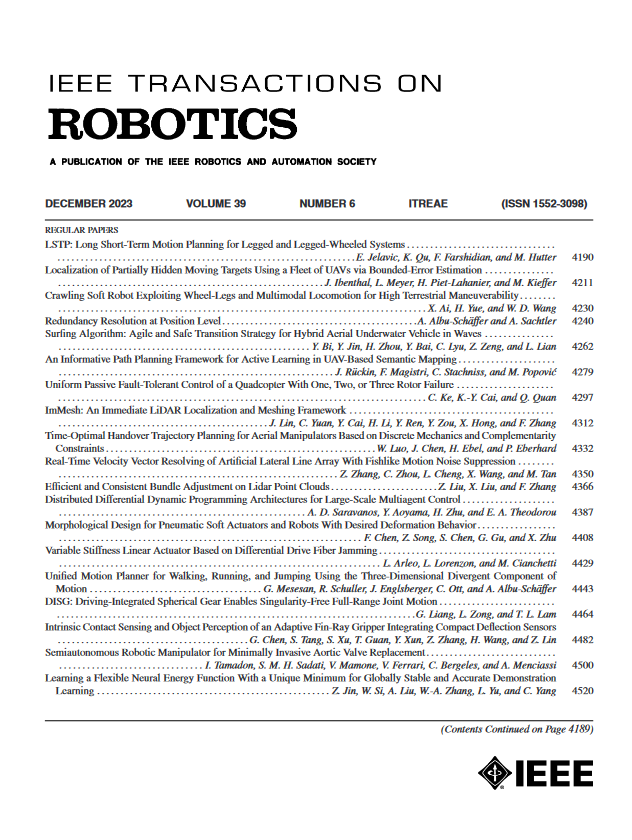图上博弈论机器人分配的双Oracle算法
IF 9.4
1区 计算机科学
Q1 ROBOTICS
引用次数: 0
摘要
在本文中,我们研究了博弈论机器人分配问题,其中两个玩家策略性地分配机器人来竞争多个感兴趣的地点。机器人具有进攻或防御能力,可以干扰和削弱对手,从而接管竞争场地。这个问题属于传统的首字母缩略词上校吸盘游戏(CBG)。考虑到机器人的异构能力和环境因素,我们通过结合异构机器人类型和捕获机器人在站点之间转换的图形约束来推广传统的Blotto游戏。然后,采用双神谕算法(DOA)求解广义Blotto对策的纳什均衡。特别地,对于相互抑制的循环-优势-异构(CDH)机器人,我们定义了任意两种机器人类型之间的新转换规则。基于这种转变,我们设计了一种新的效用函数来定量地衡量游戏的结果。并严格证明了所设计的效用函数的正确性。最后,我们进行了大量的仿真,以证明DOA在计算图上齐次、线性异构和CDH机器人分配的纳什均衡方面的有效性。本文章由计算机程序翻译,如有差异,请以英文原文为准。
Double Oracle Algorithm for Game-Theoretic Robot Allocation on Graphs
In this article, we study the problem of game-theoretic robot allocation where two players strategically allocate robots to compete for multiple sites of interest. Robots possess offensive or defensive capabilities to interfere and weaken their opponents to take over a competing site. This problem belongs to the conventional an acronym colonel blotto game (CBG). Considering the robots' heterogeneous capabilities and environmental factors, we generalize the conventional Blotto game by incorporating heterogeneous robot types and graph constraints that capture the robot transitions between sites. Then, we employ the double oracle algorithm (DOA) to solve for the Nash equilibrium of the generalized Blotto game. Particularly, for cyclic-dominance-heterogeneous (CDH) robots that inhibit each other, we define a new transformation rule between any two robot types. Building on the transformation, we design a novel utility function to measure the game's outcome quantitatively. Moreover, we rigorously prove the correctness of the designed utility function. Finally, we conduct extensive simulations to demonstrate the effectiveness of DOA on computing Nash equilibrium for homogeneous, linear heterogeneous, and CDH robot allocation on graphs.
求助全文
通过发布文献求助,成功后即可免费获取论文全文。
去求助
来源期刊

IEEE Transactions on Robotics
工程技术-机器人学
CiteScore
14.90
自引率
5.10%
发文量
259
审稿时长
6.0 months
期刊介绍:
The IEEE Transactions on Robotics (T-RO) is dedicated to publishing fundamental papers covering all facets of robotics, drawing on interdisciplinary approaches from computer science, control systems, electrical engineering, mathematics, mechanical engineering, and beyond. From industrial applications to service and personal assistants, surgical operations to space, underwater, and remote exploration, robots and intelligent machines play pivotal roles across various domains, including entertainment, safety, search and rescue, military applications, agriculture, and intelligent vehicles.
Special emphasis is placed on intelligent machines and systems designed for unstructured environments, where a significant portion of the environment remains unknown and beyond direct sensing or control.
 求助内容:
求助内容: 应助结果提醒方式:
应助结果提醒方式:


